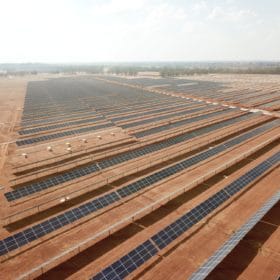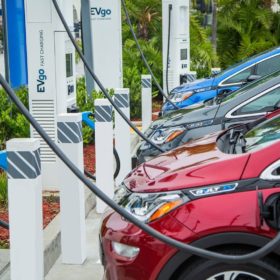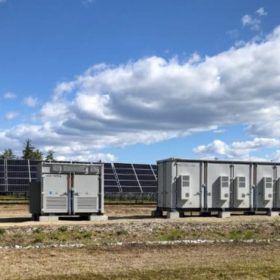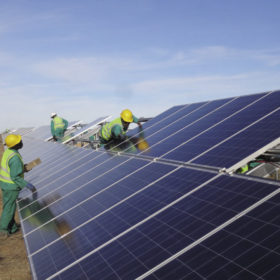FRV builds on Australian portfolio with 2.4 MW/5 MWh solar-storage plant
Fotowatio Renewable Ventures has started building a 5 MW solar-storage hybrid power plant near Dalby, southern Queensland.
General Motors expands EV investments, plans more U.S. battery manufacturing capacity
General Motors said it is accelerating plans for two new battery cell plants in the United States.
Plan to double size of 20 MW Madagascar solar park
The island nation’s first utility scale solar park is set to double in size and have energy storage added, with work due to start this month.
NanoGraf unveils new battery chemistry materials
NanoGra’s silicon-oxide anode material can increase battery capacity in the 18650 form factor by an initial 12% at commercially competitive prices.
Maldives launch tender for 40 MW/40 MWh of storage
The government of the archipelago is tendering the deployment of two big batteries, with capacities of 24 MW/24 MWh and 16 MW/16 MWh, respectively, to store renewable energy for 22 islands.
Cathode discovery ‘opens up new pathways’ for calcium-ion storage
Scientists in South Korea tested a new cathode material as part of a calcium-ion battery (CIB), achieving some impressive results. The material retained more than 90% of it initial capacity after 500 cycles, alongside some of the best performance results seen so far for this technology. The scientists say that this discovery opens up “an unexplored pathway toward the realization of stable and high-power cathodes in CIBs.”
Solarwatt, BMW launch new storage system for residential PV
The smallest of the storage units has a capacity of 4.8 kWh and an output of 1.5 kW. It can be expanded to eight battery modules in steps of 2.4 kWh and has a maximum of 57.6 kWh, and 6 kW, of power.
Northvolt gets cash boost to expand capacity of Swedish gigafactory to 60 GWh
The battery manufacturer is planning to raise $2.75 billion through a private placement and to use the funds to expand the capacity of its lithium-ion battery manufacturing site which is currently under construction in Sweden, from 40 GWh to 60 GWh.
Energy storage deployments slowed in the US in Q1, but the sector is on track for 3x growth in 2021, report says
Favorable federal tax policies and state regulatory reform could help the storage sector notch even higher rates of growth.
Scatec secures 150 MW of South African tender as part of solar-plus-storage project
The Norwegian renewables business said the PPA-linked generation capacity is part of a wider, $1 billion complex which will feature 540 MW of solar project capacity and 225 MW/1.14 GWh of battery storage.










